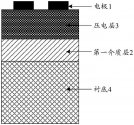Shenzhen Jieyang Microelectronics releases the world’s smallest and lowest power UWB SoC chip
Shenzhen Jieyang Microelectronics Co., Ltd. ("Jieyang Micro") released an industry-leading ultra-wideband (UWB) system-on-chip (SoC), model GT1500, for ranging, positioning and Wireless connectivity applications.
Not affected by network infrastructure coverage, UWB can achieve ubiquitous, fast and accurate ranging and positioning functions indoors and outdoors. In addition to its excellent ranging and positioning capabilities, UWB can also provide energy-efficient wireless connections at configurable data rates, creating new application scenarios for mobile phones, wearable devices, digital keys, tags, etc.; in access control, smart payment, Realize new consumer-oriented commercial applications in areas such as smart homes and smart cities.
Leading the industry in terms of lowest power consumption and overall performance, Jieyang Micro GT1500 chip adopts wafer-level packaging with a package size of 9 square millimeters, making it the world's smallest UWB SoC chip. GT1500 is a standard and platform UWB chip. It adopts a compact single-chip solution. It has four receiving channels, including RF, analog and baseband functions. It works closely with the embedded MCU to perform control and protocol processing. All tasks are in one chip. Completed within the chip.
GT1500 is ideally suited for space-constrained wearable devices, tags and IoT product applications, significantly reducing 3D AoA design complexity, peripheral component count and product BoM cost. The compact design allows the GT1500 to be placed close to the antenna, improving signal reception and overall UWB performance. In addition, the GT1500 significantly extends the battery life of UWB tags compared to similar products using coin cell batteries (CR2032, 235mAh). For UWB applications that require long-term standby and online operation, the longer standby time of GT1500 significantly optimizes the user experience.
GT1500 is certified by the FiRa Alliance and also complies with the Car Connectivity Consortium (CCC) Digital Key 3.0 standard.
Not affected by network infrastructure coverage, UWB can achieve ubiquitous, fast and accurate ranging and positioning functions indoors and outdoors. In addition to its excellent ranging and positioning capabilities, UWB can also provide energy-efficient wireless connections at configurable data rates, creating new application scenarios for mobile phones, wearable devices, digital keys, tags, etc.; in access control, smart payment, Realize new consumer-oriented commercial applications in areas such as smart homes and smart cities.
Leading the industry in terms of lowest power consumption and overall performance, Jieyang Micro GT1500 chip adopts wafer-level packaging with a package size of 9 square millimeters, making it the world's smallest UWB SoC chip. GT1500 is a standard and platform UWB chip. It adopts a compact single-chip solution. It has four receiving channels, including RF, analog and baseband functions. It works closely with the embedded MCU to perform control and protocol processing. All tasks are in one chip. Completed within the chip.
GT1500 is ideally suited for space-constrained wearable devices, tags and IoT product applications, significantly reducing 3D AoA design complexity, peripheral component count and product BoM cost. The compact design allows the GT1500 to be placed close to the antenna, improving signal reception and overall UWB performance. In addition, the GT1500 significantly extends the battery life of UWB tags compared to similar products using coin cell batteries (CR2032, 235mAh). For UWB applications that require long-term standby and online operation, the longer standby time of GT1500 significantly optimizes the user experience.
GT1500 is certified by the FiRa Alliance and also complies with the Car Connectivity Consortium (CCC) Digital Key 3.0 standard.


